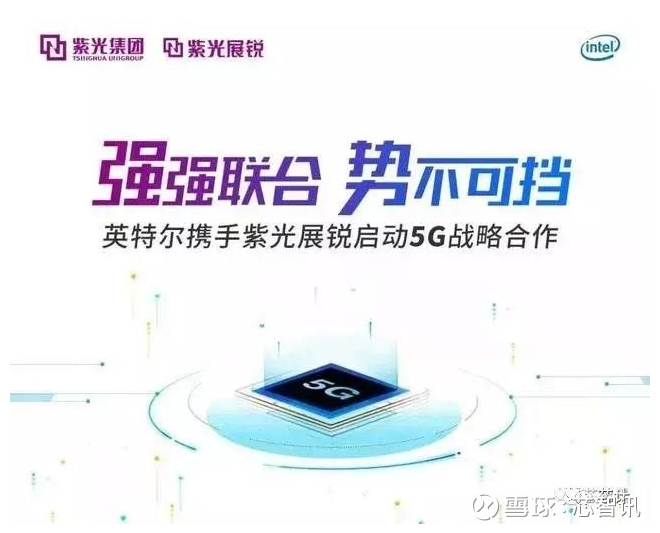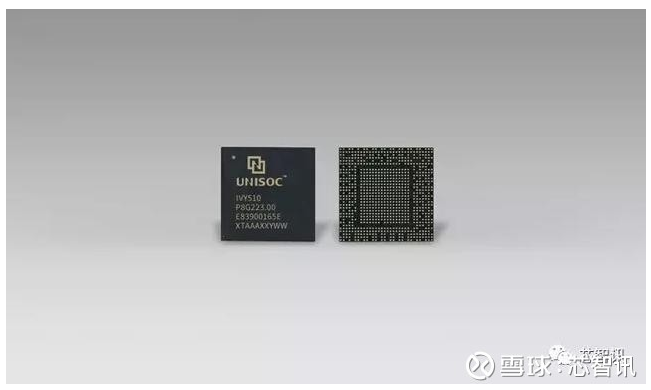A sudden! Intel announced the end of 5G chip cooperation with spreadshare! Zhanrui exclusive response
Worried that the technology transfer could cause problems in Washington, Intel has ended a partnership with tsinghua unigroup corp. 's uplink unit to share the latest 5G modem chips, the nikkei business daily reported.

As early as February 22 last year, unigroup and Intel reached a long-term cooperation agreement for 5G, including a series of products based on Intel's XMM8000 series modems for multiple product lines in diverse markets. Based on the cooperation, zhangrui announced at the time that it planned to launch the first commercial 5G mobile phone platform in the second half of 2019.

Intel had insisted the partnership was not over, despite political pressure from Washington. However, Robert Topol, general manager of Intel's office of 5G strategy and planning, said at a briefing at this year's MWC that the decision to end the partnership with unigroup was "very recent". "We decided to stop working together."
Current economic tensions between the United States and China are a factor, according to sources familiar with the situation.
"Inside the company, former Intel CEO Brian Krzanich was an advocate and initiator of the deal, but now he's gone." "A person familiar with the matter told the nikkei business daily. "At the same time, Intel has been concerned that, given the current tensions between the us and China, a close relationship with the Chinese state-backed company could somehow upset us authorities."
According to the Roadmap previously released by zhangrui, it was originally planning to launch a high-end 5G mobile phone chip based on 7nm technology in the second half of 2019. This should be the original planned 5G mobile phone chip cooperated with Intel. That is to say, the processor based on ARM CPU core architecture designed by areg will be adopted, and the baseband is based on Intel's 5G baseband XMM 8000 series.

The cancellation of Intel's 5G baseband deal with endri means that the high-end 5G mobile phone chip based on 7nm technology may not survive.
In this regard, the first time the core meter to the development of the sharp side of the verification, the other responded, "no comment." "Last year, we only signed a 5G cooperation agreement with Intel, but the cooperation between zhangrui and Intel on 5G has not started yet," the person stressed. And today zhanrui in MWC released 5G baseband chip - "spring vine 510 is based on zhanrui self-developed."

Bring in the spring of 510 cane
For the introduction of springvine 510, please refer to zhangrui's first 5G baseband chip officially released and successfully promoted to the first echelon of 5G.
It is worth mentioning that last year, zhangrui made a clear positioning of the product line, establishing two major product brands of mobile communication chip brand "huben" and pan-connection chip brand "springteng", making the product line of zhangrui more clear and focused.
And the release of "springvine 510" is also under the pan-connection chip brand "springvine". So, the original 5G phone chips for the high-end market with Intel were supposed to be under the huben brand. But the cancellation of the 5G deal with Intel could be a setback for zhangrui's plan to break into the high-end 5G phone chip market by partnering with Intel.
Fortunately, zhanrui doesn't put all its eggs in one basket. Although the above 5 g chip on the roadmap, marked only the original plan to cooperate with Intel will launch at the end of 2019, 5 g mobile phone chips, but show sharp since the research of 5 g chip has been accelerated, and also in the original working with Intel to launch high-end 5 g mobile phone chips was introduced, and will also be commercial in years, successfully into the first tier 5 g, is not easy.
Since the 5G cooperation with Intel is hopeless, it is bound to further promote zhangrui to put more resources into the research and development of the next generation of autonomous 5G chips. Relying on independent research and development, it will launch more powerful autonomous 5G chips in the follow-up and enter the high-end market with its own hard strength!
(disclaimer: this article is transferred from the network, the copyright belongs to the original author, if necessary, please contact us to delete)


